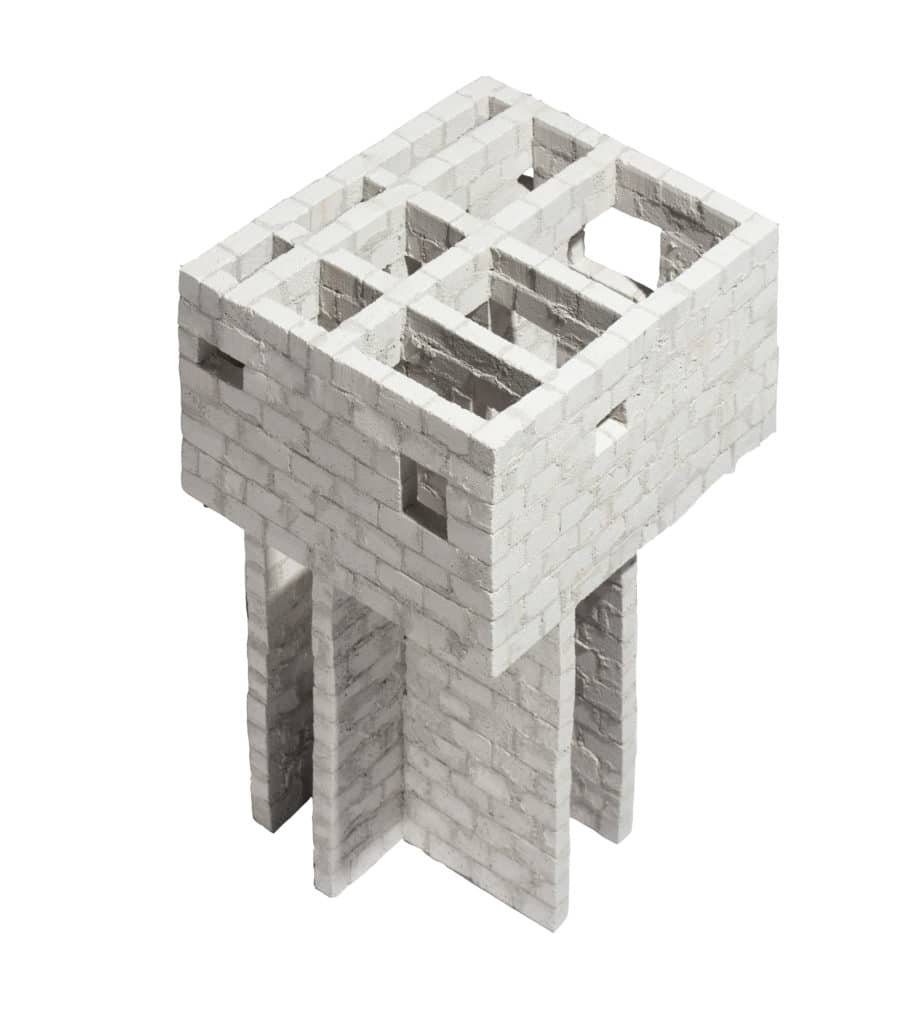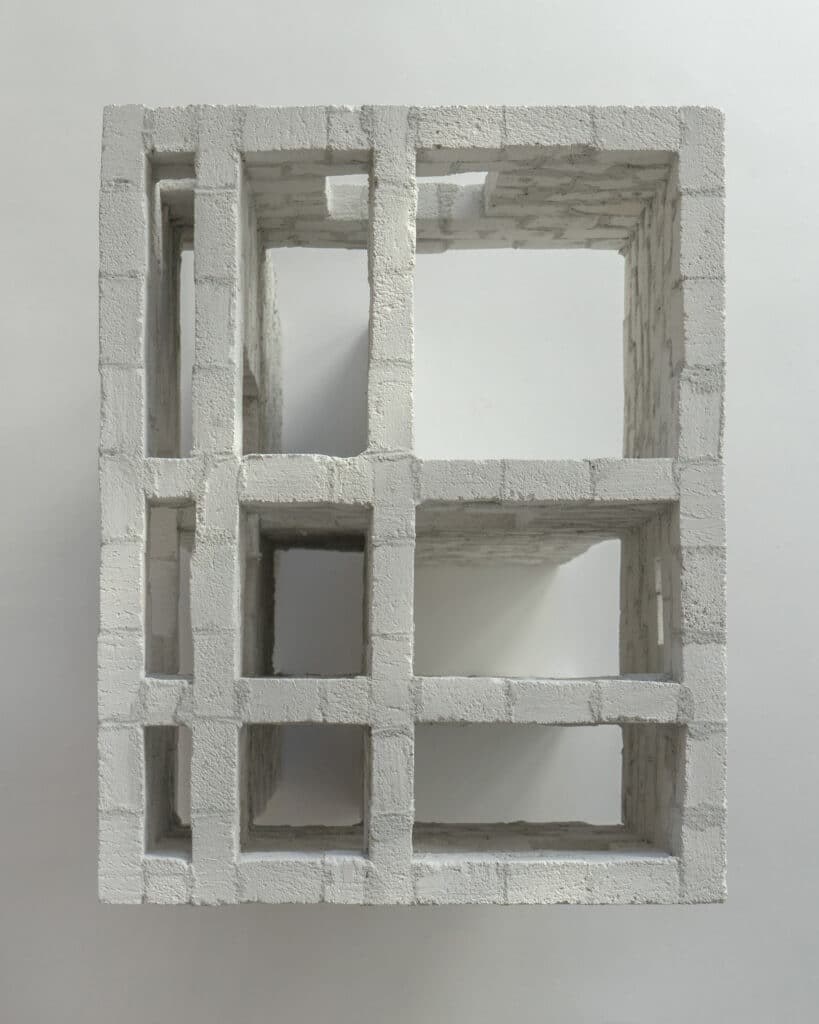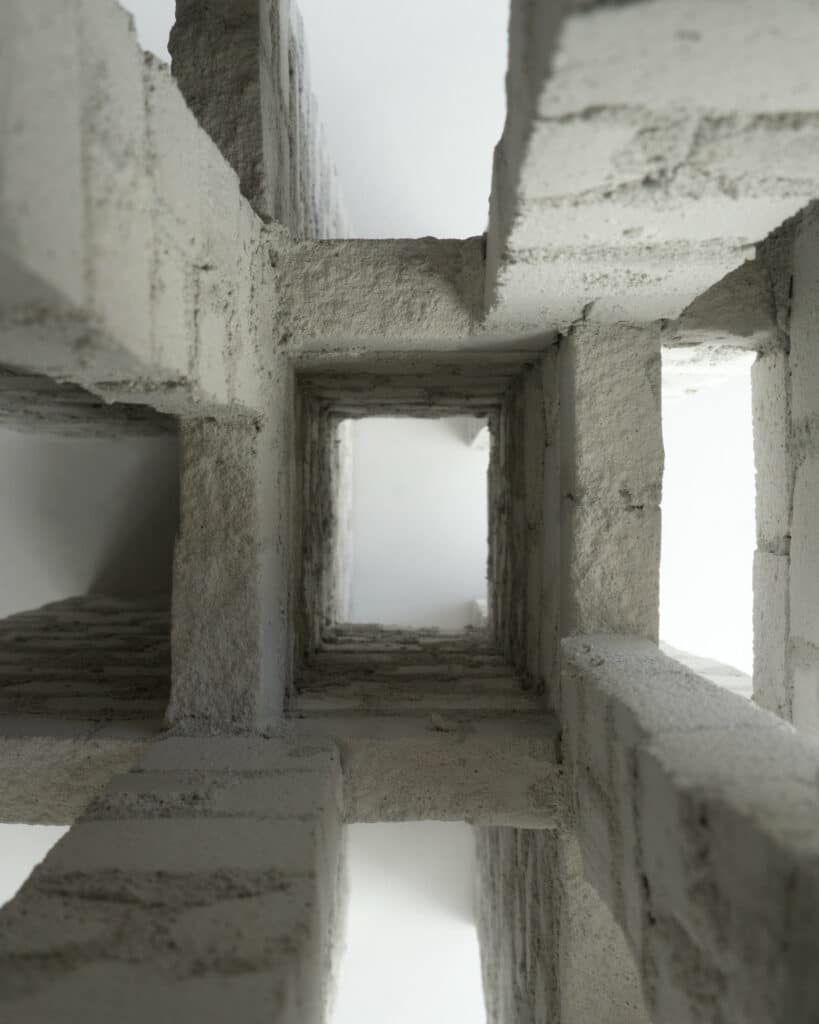Alternative Histories: Johansen Skovsted Arkitekter on Peter Märkli


Johansen Skovsted were asked to imagine an alternative future for a historical architectural drawing, presented in the form of a model. Johansen Skovsted were assigned the drawing ‘Untitled 1226’ (1980-1999) by Peter Märkli.
The result is a model which furthers ideas suggested in the drawing. Its proportions and dimensions are directly transferred from the drawing if read as an elevation. The drawing’s layered squares and lines create depth, generating a fore and background that appear in the model as openings and views. The model is not to be read as a finished proposition, but as a concentrated study of the proportions and spacious transitions originating from Peter Märkli’s drawing.
The model is constructed in 754 white aerated concrete blocks. All blocks are cut by hand in the dimensions 15 x 20 x 30mm and joined with adhesive. The interior walls intertwine into each other’s bonds for strength and stability but overlap with the outer walls in just two points per wall, to prevent the wall from being weakened by a vertical bonding. The merge between the inner and outer walls creates a displacement of the vertical line in the facade and interrupts the repetitive block structure. The inner openings are placed systematically in each wall section, while the exterior openings are shaped according to the proportions of the drawing and placed strategically to frame certain views in the enclosed upper part.
The aerated concrete blocks represent a readable scale and refer to a particular building technique, but the tectonic of the model creates an abstraction in scale. The model appears both in its own right as an object at 1:1, and as a representation in 1:20. At 1:1, the construction does not require any additional structural elements for creating openings and cantilevers but is held up by the fixed bricks. This results in a stable structure, simultaneously stacked and hanging.
Due to its heavy top and slight bottom, the model was built upside down. This technique generates a duality, enabling the model to be perceived either way. Different characters appear depending on how the object is staged, evoking a new dialogue around the model and its relation to Märkli’s initial drawing.
– Johansen Skovsted




